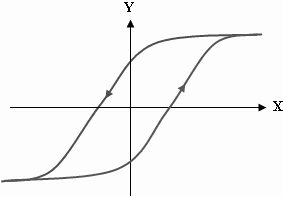Termed jump resonance by electrical engineers, it involves scaling up the value of some parameter in a non-linear system to a critical value at which point there can be a sudden jump to a new and qualitatively different state, without any intermediary states. Scaling down or decreasing the value of the parameter may result in an abrupt change back to the original state, but at a different critical value (see figure below). Repeatedly scaling up and down can result in a hysteresis cycle (i.e., ‘progression’ followed by ‘regression’ and so on). Subsequently, the cycle is broken and the system settles into stable regime as defined by the new state. Many control systems have a built-in hysteresis cycle (e.g., thermostat). There is some evidence that hysteresis is a feature of the development of conservation and some indication that it is takes place in the development of grasping (i.e., between the scissor grasp and pincer grasp). All told, hysteresis, which takes place when a system is undergoing a transition, is one demonstration that qualitative and quantitative change are not mutually exclusive, but rather that one (quantitative change) can give rise to the other (qualitative change).
